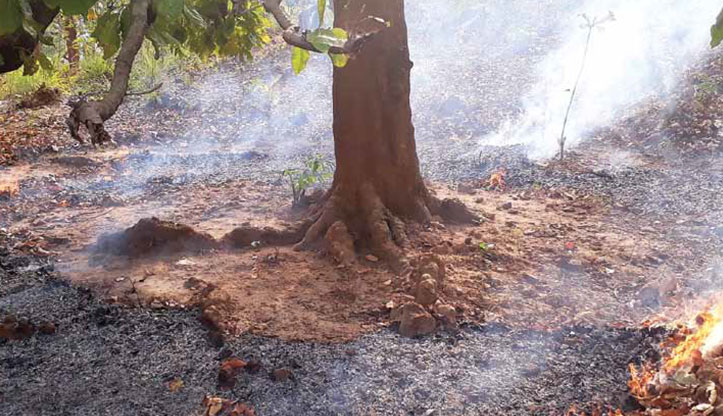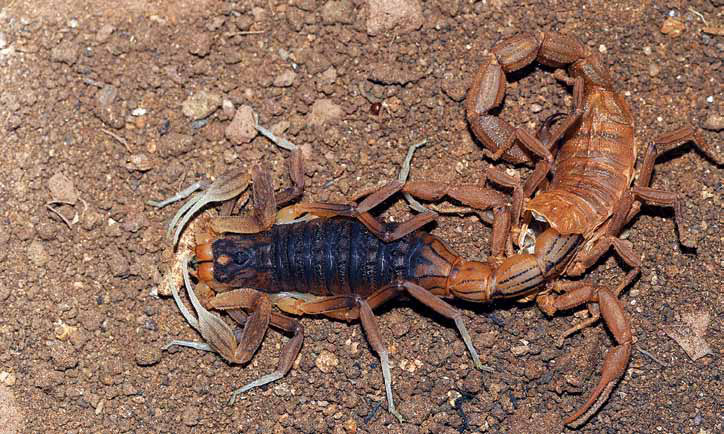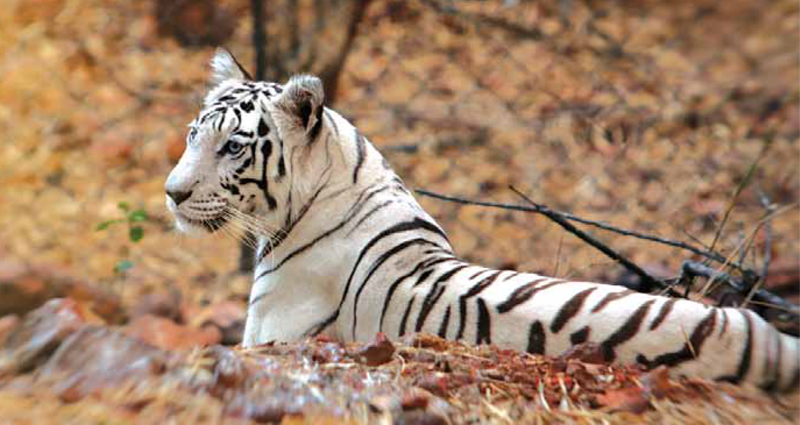
By Dr. H.S. Pabla
The Exiled Child of India’s Forests
The year was 2011. We were on cloud nine after having reestablished the tiger in Panna and gaur in Bandhavgarh, from where they had become extinct in the previous few years. Encouraged by these successes, we were planning big things to restore Madhya Pradesh’s biodiversity. Return of black buck to Kanha, barasingha to Satpura and cheetah to Kuno were in the works. I was aiming to get it all done before my impending retirement in 2012, as I was not sure if there was anyone after me with the maniac’s zeal required to get these things done. However, I had totally forgotten about the white tiger which was as much a part of our natural heritage as the pieces I was planning to restore. Then one day, late Anil Yadav, a vernacular journalist who had endeared himself to everyone in the forest department with his selfless support, sent me a video of the white lion reintroduction project going on in South Africa and called to suggest that we should do the same with the white tiger. The idea immediately appealed to me as the white tiger was the most famous gift of Madhya Pradesh (MP) to the world but was no longer adorning our own forests. It appeared to be the seed of a new idea.
However, I was aware of the popular stereotypes about the white tiger: that all white tigers were heavily inbred and, therefore, prone to genetic diseases and deformities; that it was a freak of nature, not a separate species or sub-species of tiger,and therefore, did not deserve serious conservation investments, etc. Another popular notion that captive tigers cannot survive in the wild had already been dispelled by then, as we had established T4 and T5 in Panna. Until the day Anil called, my thoughts on the subject were no different because we had never given the issue a serious thought. So, I ran to the internet and tried to dig out the information that could help me make a decision as to whether to pursue the idea or not. About a week’s research convinced me that it was worth pursuing. I found out that white tigers once roamed not only MP but all over India and beyond. I also found out that the mutant white gene, which removes the orange colour from its coat, has nothing to do with the deformities seen in the zoo population. Any deleterious genes acquired in the course of generations of inbreeding could be weeded out through adequate
outbreeding with normal tigers.
White tigers of pure Indian descent were believed to be especially immune to the deformities resulting from inbreeding in zoos. Further, that several countries besides India, like Korea and Indonesia, had cultural links to the white tiger.
Although MP was responsible for giving the white tiger to the zoos of the world, it was also responsible for allowing the extermination of the species from the wild. It occurred to me that this was
one of the rare mistakes against nature that man could still rectify. If white tigers became extinct even in the zoos, as some NGOs and associations of zoos were campaigning against their production, the white gene would be lost for ever.
If that happened, it would be the first time man would deliberately eliminate a harmless gene from the earth since the times we became conscious of the importance of biodiversity to the well-being of mankind. The clinching argument was that the white gene would improve the genetic diversity of wild tigers, leading to better adaptability and survival. Thus, I
found several reasons to return the white gene to the wild and none against. So, I decided to sow the seed Anil had handed over to me.
What better place to do that than the Sanjay Dubri Tiger Reserve of Sidhi (SDTR), I thought? This was the forest where Mr. Martand Singh of Rewa had captured Mohan, the tiger that became
the ancestor of all the white tigers of the world, in 1951. So, I wrote a project for the reintroduction of white tiger into this reserve and sent it to the state government, central government and National Tiger Conservation Authority (NTCA) for mandatory permissions.
The project involved breeding of white tigers of pure Indian pedigree with normal tigers, in an on-site captive breeding facility, until no foreign genes (coming from other tiger sub-species in
the zoos) remained in the animals to be released in the wild.
The animals to be released could be in several combinations. It could be a whitepair, a single white female or a female with cubs, and so on. It could also be a normal coloured male or female
carrying a white gene (animals are white only if they get white gene from both parents). The idea was to introduce the white gene into the local tiger population where it would spread further due to interbreeding between white and normal tigers. SDTR, although it had low prey base, was especially suitable for this project, apart from historical reasons. It had very low tiger density. Therefore, the introduced tigers were unlikely to face much hostility from resident tigers. The tigers would be released after sufficient hunting training.
Panna had taught us that tigers reared in captivity were able to establish in the wild without much problem with the help of some initial support. The project also included prey supplementation through translocation from other parks, using the expertise we had recently acquired through the gaur reintroduction project. I proposed to raise necessary funds, and more, through donations, and the sale of tourism and filming rights etc.
By being the only place on earth to show wild white tigers, SDTR would transform the region economically, through tourism, I claimed. I retired from service in February 2012 after sowing this
seed, confident that its strong conservation and economic logic would carry it through.
But that was not to be. While the state government gave the permission subject to the approval from central agencies, NTCA refused permission. Their decision was based on the advice
of the Wildlife Institute of India (WII) which said that“white tiger does not represent a unique lineage of tigers but is an aberration caused by recessive alleles and therefore are not of
significance to merit conservation efforts of reintroduction”. The Chief Wild Life Warden (CWLW) accepted the diktat of the NTCA and informed the government that his office was no longer interested in the project.
I was sad but knew that I could do nothing. However, Anil Yadav would not let me rest. By this time our association had become even stronger. He had entered my life as a champion of the pardhi community, the deadly hunters of central India. We both had a common approach to the issue, in that, the pardhis needed help, instead of raw policing, in stopping poaching of wildlife. From
journalism, he had gone over to making socially oriented documentaries and one of his first productions was a film on the plight of the pardhis (Pardhi: The Unheard Voices). Later, he made a film on gaur reintroduction for the forest department without charging any fee. I used to write the script for these films. He now goaded me into continuing my efforts to bring the great white back and offered to make a film on the subject. Thus, we made the film called “White Tiger: Extinction, Eternal Imprisonment or Freedom?”
Although I thought I had put everything needed in the script, Anil, despite knowing no English, would often bring to my notice new websites which contained much more knowledge about
the animal than I had come across till then. Thus, it was he who helped me get in touch with Dr. Shu-Jin Lou from the Peking University, Leanne Drummond of (https://whitetigertruths.wordpress. com/) and Dr. Brian Davis of the Exotic Genome Repository of the USA, the people who knew everything about the white tiger and who whole heartedly
supported the push to reintroduce the white tiger into the wild.
Dr. Luo, had described the entire genome ofthe white tiger in a paper in Scientific American in 2014 and had concluded that “White Bengals result from genetic mutations that are part of
their natural species diversity, and we have a responsibility to save them. — No one knows how many centuries—quite possibly millennia—white tigers lived freely in their natural habitat before human hunters eradicated them.” She even sent us a video recorded message saying that “I support the idea of reintroducing healthy, outbred white tigers to its pre-extinction habitats in India to cohabit with its orange counterparts.—“. Dr. Drummond, who is an independent researcher and has collected every bit of information available on white tiger on her website under the title “White Tigers—The Truth”, sent us a message saying “It’s great to know that the push to return white tigers to the wild is continuing, and I’m glad my work is of use to you”. Dr. Davis has a very provocative statement on the website of his organisation saying, “There is a mountain of misinformation being spread about white tigers. They are not defective. They are not unhealthy. —-
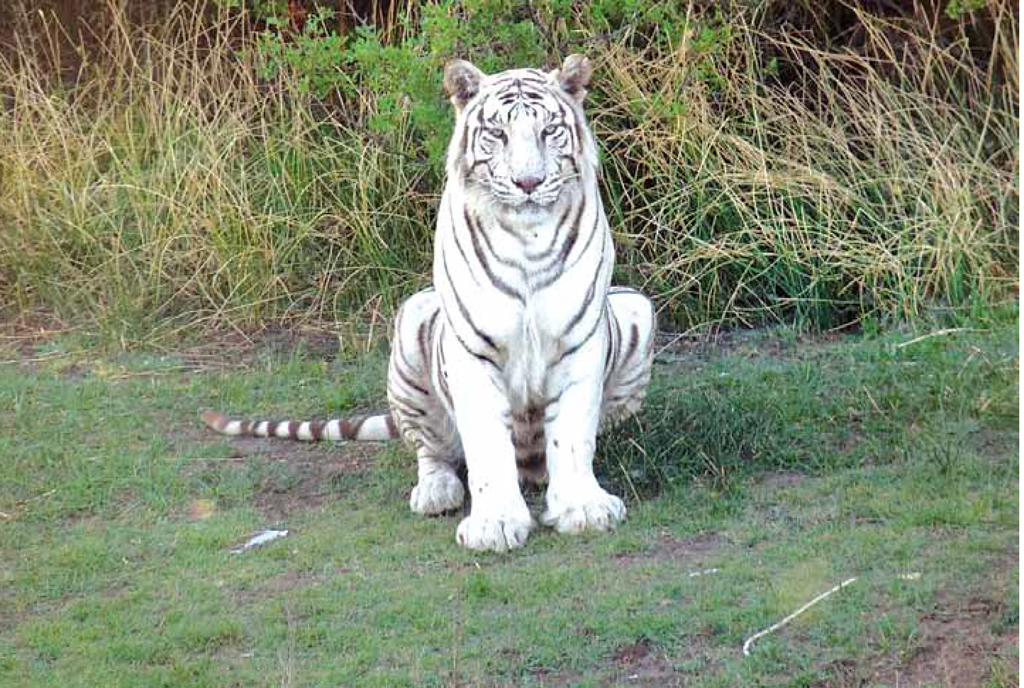
A white Tigress in a Private game Reserve (Tiger Canyon) of South Africa.
If anyone tells you different, send them here and we will set them straight”. The Species Survival Trust has also compiled all available information on the white tiger and have flagged their opinion
through a statement attributed to Dr. Jan E. Janecka of the Texas A&M University, “One of the most important factors for long-term persistence of (tiger) populations and health of individuals is to ensure that genetic diversity is maintained, specifically that rare variants do not disappear from the populations.”
We inserted all this information in the film and ended it with a plea from a cute little white cub saying:
“Dear Indians, I am just the brother of your dear golden Tiger. When my brothers are roaming free in the forests, why are all my children in cages? For generations, they are born in prisons, they live in prisons and die in prisons of late, we have even heard noises to wipe us off the planet completely. You once saved my unique race by saving my ancestor, Mohan, from hunters. Now
help me return to my ancestral land of Sanjay Tiger Reserve. In zoos, I am neither happy nor healthy. Believe me, my return to Sanjay Tiger Reserve shall transform the entire region. The zoos earn millions by showing me off. Now let the poor tribals of Sidhi, with whom my forefathers lived for centuries, also earn something. By God, my children shall
pray for you forever!”
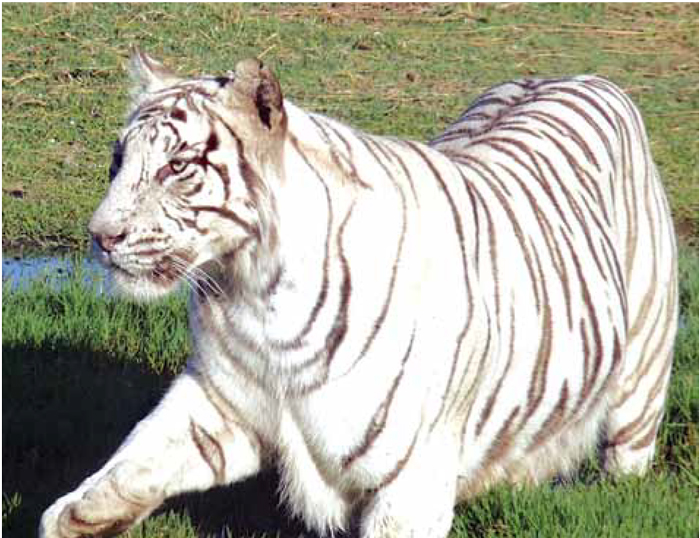 I thought the film made a strong impact on the viewers but how many persons see a documentary after all, unless it comes from a big name like National Geographic or Discovery Channel? We held a special screening for the top brass of the forest department where I thought everybody was visibly impressed. I shared all the research materials with successive Chief Wild Life Wardens and suggested that they ask NTCA and WII to reconsider their positions in the light of the new information. But nothing happened. I tried to push in the idea through the State Board for Wild Life where I was a member but encountered clear resistance from the department. I thought we had dispelled all the doubts about the value of the white tiger through the film and the material on which it was based but, obviously, the bias against the poor creature was too deep rooted to be easily shed. Disappointed with the state bureaucracy, I started bombarding WII with the new information. After my pestering for
I thought the film made a strong impact on the viewers but how many persons see a documentary after all, unless it comes from a big name like National Geographic or Discovery Channel? We held a special screening for the top brass of the forest department where I thought everybody was visibly impressed. I shared all the research materials with successive Chief Wild Life Wardens and suggested that they ask NTCA and WII to reconsider their positions in the light of the new information. But nothing happened. I tried to push in the idea through the State Board for Wild Life where I was a member but encountered clear resistance from the department. I thought we had dispelled all the doubts about the value of the white tiger through the film and the material on which it was based but, obviously, the bias against the poor creature was too deep rooted to be easily shed. Disappointed with the state bureaucracy, I started bombarding WII with the new information. After my pestering for
many years, WII constituted a committee to examine the new evidence on the subject. The committee very gracefully concluded that their earlier opinion on the subject was a mistake and that they would be happy to revise their position in the light of the new research that had
come to their notice if it was approached for an opinion again. By now, I had come to the conclusion that nobody in the state had the conviction to revive the project. Therefore, if there was to be any movement on the subject, it had to be triggered by WII itself. So, I requested
WII to send a proposal to NTCA and the state government in view of the fact that it was their advice that had killed the project in the first place. Thanks to the greatness of the WII scientists, the Institute wrote to NTCA on 29th November, 2019 as follows:
“Some years ago this Institute was asked for an opinion by NTCA on a proposal from the State of Madhya Pradesh on the reintroduction of white tiger gene into the wild tiger population in Sanjay Tiger Reserve. At that time based on our knowledge, we had recommended that such a proposal had little merit for wild tiger conservation. However, in light of new information and better literature survey we have the following observation to offer: —- Since conservation and restoration of genetic
diversity of a species is one of the objectives of restoration ecology, it would be appropriate to consider restoring the white allele within the genepool of wild tigers. This is especially relevant
since this allele has been lost from the genepool by selective removal by humans through trophy hunting.—- You may therefore, like to communicate the Government of Madhya Pradesh
accordingly.”
Thus, it took WII nearly a decade to correct its scientific mistake. The way things are going, MP government may take another decade to act on WII’s advice, if it ever does. Perhaps NTCA
never wrote to the state as suggested by WII. Although a copy of WII’s letter had been received by the CWLW’s office also, no action was taken for over a year and a half. There were some casual discussions in the government when WII’s communication came, but officers from CWLW’s office wereless than enthusiastic. Perhaps, they were still unable to shed the old notions based on grandmothers’ tales, even in the face of clinching counter evidence. An enthusiastic officer in the government did put up WII’s letter to the forest minister, but the Congress Government fell before the minister could see the file. Thus, it is not only inaction, but also ill luck that is ruling the fate of the white tiger now.
However, I continued to drop hints to successive CWLWs about the importance of this project to the state. Although the department has recently written to the government that it is interested in
reviving the project, I am less than hopeful. As the naysayers are going to continue to try to derail the project, only sheer determination on the part of a CWLW can take the project to fruition.
That determination is nowhere on the horizon. So, my fingers are still crossed.
White tiger is the pride and mascot of Madhya Pradesh. We display white tiger dioramas on virtually all Republic Day parades in Delhi and Bhopal. But our pride is rotting in zoos across the world while our vast forests are crying for the return of their mascot. The world did not think of returning the white tiger to the wild because it did know how to turn captive tigers wild. Now that we have
already shown to the world how to do it, there is no reason why we should shy away from this challenge.
I have seen the beauty of wild white tigers in the desolate dry landscape of a small private game reserve in South Africa. Just imagine coming across one in the lush sal forests of Sidhi! Also imagine what it can do to the economy of the area. I hope the politicians of Rewa and Sidhi, for whom white tiger is such an emotive subject, are listening!
The great white is definitely going to return to the wild someday. India cannot deny the innate logic and charm of the project for long. If it ever happens, I wish it is me who delivers the news to Anil bhai in heaven. It was his idea.


